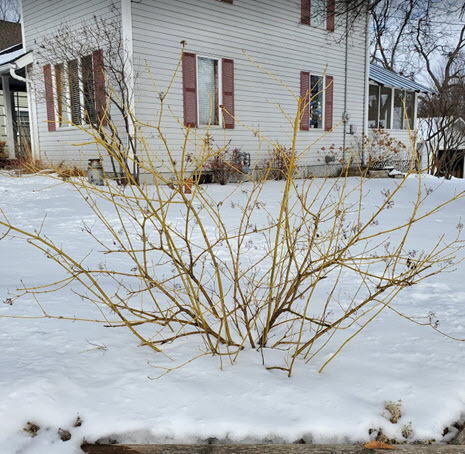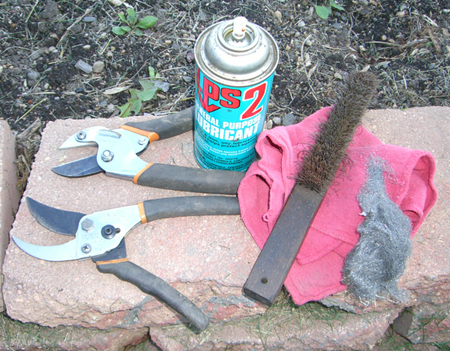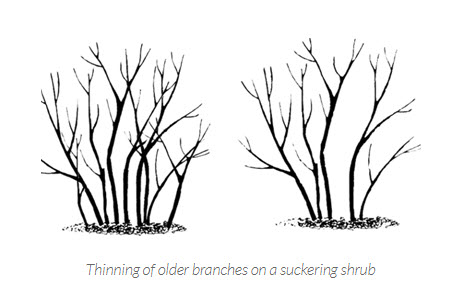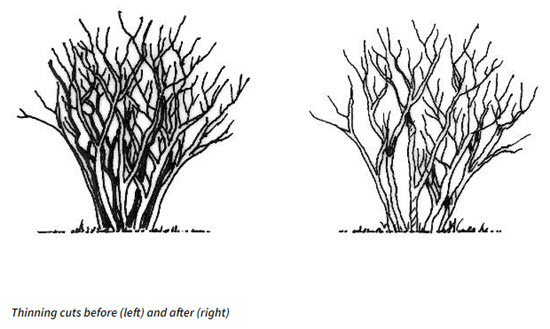Click below to listen to my 2 min. Garden Bite radio show: Dormant pruning
Now through early spring is the best time to prune MOST trees and shrubs.
Cold temperatures provide the best time to prune because the plants are dormant, their sap flowing less freely and the insects are not a bother.

Do NOT prune any spring blooming shrubs now, however, it IS a good time to prune any summer or fall flowering shrubs. More on WHEN and HOW to prune trees/shrubs from the University of Minnesota Extension. There is also a list of spring flowering trees/shrubs NOT to prune now.
First rule of pruning – THINK TWICE, PRUNE SECOND

Sharp pruners are essential. Using dry steel wool rub out any rust spots and use a little machine oil on the pivot point. Check the blades for chips, dings or dents. The thick blade on the bottom is called the anvil, the thinner curved blade is the cutting blade. If you see any dents or metal tags on the anvil, it’s time to sharpen it.
This is a quick video I did with my friend TJ Heinricy on my 2013 tv show Dig In Minnesota:
Use a sharpening stone or file to smooth out any burrs or tags, dings or chips. You’re looking to keep a clean right angle on that blade. A few drops of oil can make this job a little easier. For the cutting blade, hold the pruners so the cutting blade is parallel to the ground and the cutting edge is away from you. Hold your stone or file at the same beveled angle as the blade and move it across the blade away from your chest, repeat, always moving the sharpening stone or file away from your body. Make an occasional pass on the backside of the blade to smooth out any irregularities and keep a fine cutting edge.

Sharp pruners are good for you and good for your plants. If you’re getting torn, crushed or splintered cuts, your chances of attracting insects that bring disease multiplies.

When pruning shrub branches, come out about ¼ inch from the main branch and cut at a slight angle. If you’re cutting off larger branches then come out about ½ an inch. Prune for aesthetics, air circulation and size.

Here’s more information specific to various types of pruning from the University of Maryland. These diagrams are quite helpful!

